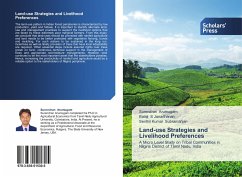The land-use pattern in Indian forest peripheries is characterized by low production, yield and fallows. It is important to identify alternate land-use and management practices to support the livelihood options that are faced by these extremely poor marginal farmers. From this study, we conclude that land-uses should be promoted with rainfed agriculture and land needs to be better protected with vegetative fencing, bunds and mulching. For such actions to be sustained in the long run, incentives as well as timely provision of trees that have local adaptability are required. Other essential steps include assured rights over trees grown on farm, continuous technical support in the management of trees and appropriate soil-moisture managements. However, land continues to be the most important asset that the stakeholders possess. Hence, increasing the productivity of rainfed land agriculture would be a reliable option to the stakeholders of Nilgiris peripherie.








